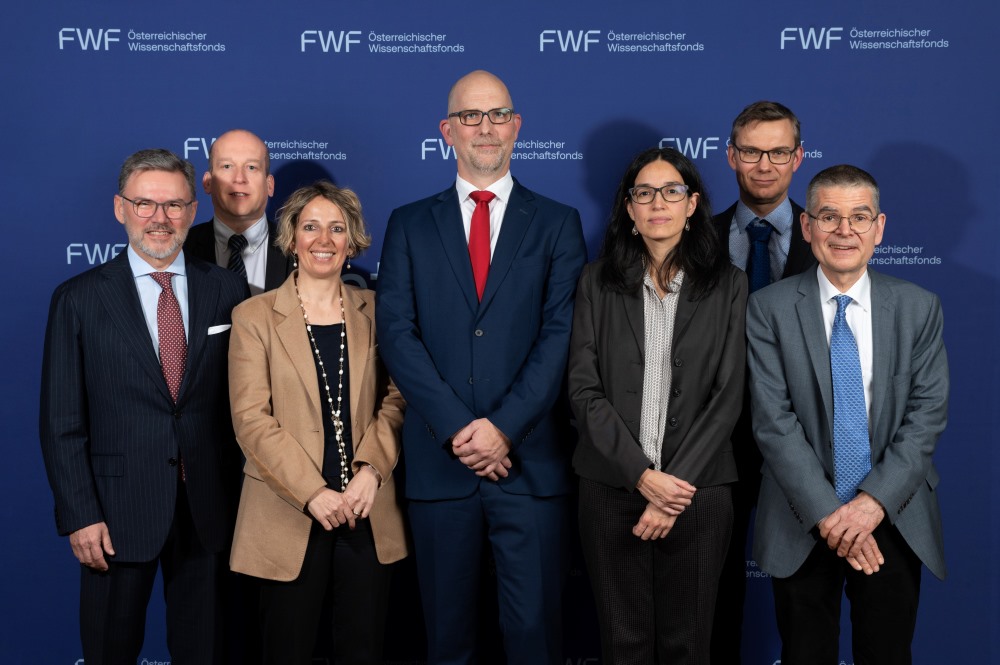October 4, 2024
Cluster of Excellent Brains
ISTA neuroscience part of FWF Cluster of Excellence with 21 million Euro research funding
They decipher the function of neurons so that diseases such as epilepsy can be treated in the future. Eleven research groups at the Institute of Science and Technology Austria (ISTA) are now contributing to this mission – together with colleagues from the Medical Universities of Vienna and Innsbruck, the University of Vienna and the Institute of Molecular Biotechnology (IMBA) of the Austrian Academy of Sciences (ÖAW). The new Cluster of Excellence will be funded by the Austrian Science Fund (FWF) with 21 million euros. It is the fifth Cluster of Excellence with a total of 27 research groups participating at ISTA participation.

Clusters of Excellence are part of the FWF’s “exzellent=Austria” campaign, which aims to strengthen Austria as a location for cutting-edge research. The clusters combine frontier research, training and the promotion of young talent. In the first funding round at the beginning of 2023, ISTA was represented in three clusters – quantum science, energy storage, and microbiomes – followed by another on artificial intelligence in spring 2024. ISTA is once again represented among the two newly approved clusters. Eleven research groups, including the two representatives on the cluster’s Board of Directors, Gaia Novarino (ISTA Executive Vice President) and Peter Jonas (Magdalena Walz Professor for Life Sciences).
Neuronal circuits in health and disease – decoding the secrets of the brain
In the FWF Cluster of Excellence “Neuronal Circuits in Health and Disease”, a common category of inhibitory neurons is being examined more closely. This is a group of nerve cells that constrain the activity of other nerve cells. “Our brain consists of about 80 percent excitatory and about 20 percent inhibitory neurons. The role of the latter in neuronal networks is crucial,” explains ISTA Professor Peter Jonas, Deputy Director of Research of the cluster.
These neurons are present in all neuronal networks and brains. Although they are widespread, comparatively little is known about these cells. This is because their structure and functions are particularly diverse. “In the long term, a better understanding of these neurons could create the basis for personalized treatment of human diseases such as schizophrenia, autism, and epilepsy,” explains Gaia Novarino, who has been investigating the genetic basis of autism for years and is another representative of the Institute of Science and Technology Austria (ISTA) on the Cluster’s Board of Directors.
The research cluster brings together five Austrian institutions that are already conducting research in this field, but with different approaches. “As ISTA, we are contributing our expertise in frontier research with eleven neuroscience groups – from a wide range of neuroscientific fields to brain imaging techniques. At the same time, the cluster consists of a network with clinical researchers who can directly involve patients. This combination increases our chances of improving our understanding of the brain’s functions, and also of making progress in the development of therapies for brain diseases,” says Jonas. The need is striking: in Austria alone around 900,000 people received symptomatic treatment for mental illnesses in 2021. It is hoped that the cluster’s collaboration will stimulate a major scientific breakthrough.
The cluster will be funded with 21 million euros for a period of five years. Tibor Harkany from the Medical University of Vienna is the Director of Research. Also involved are research groups from the Medical University of Innsbruck, the Medical University of Vienna, the Institute of Molecular Biotechnology (IMBA) of the Austrian Academy of Sciences (ÖAW), the University of Vienna, and the Institute of Science and Technology Austria (ISTA).
In addition to Peter Jonas and Gaia Novarino, nine other ISTA research groups are involved: those of Jozsef Csicsvari, Johann Danzl, Mario de Bono, Simon Hippenmeyer, Maximilian Jösch, Ryuichi Shigemoto, Lora Sweeney, Gasper Tkacik and Tim Vogels.



